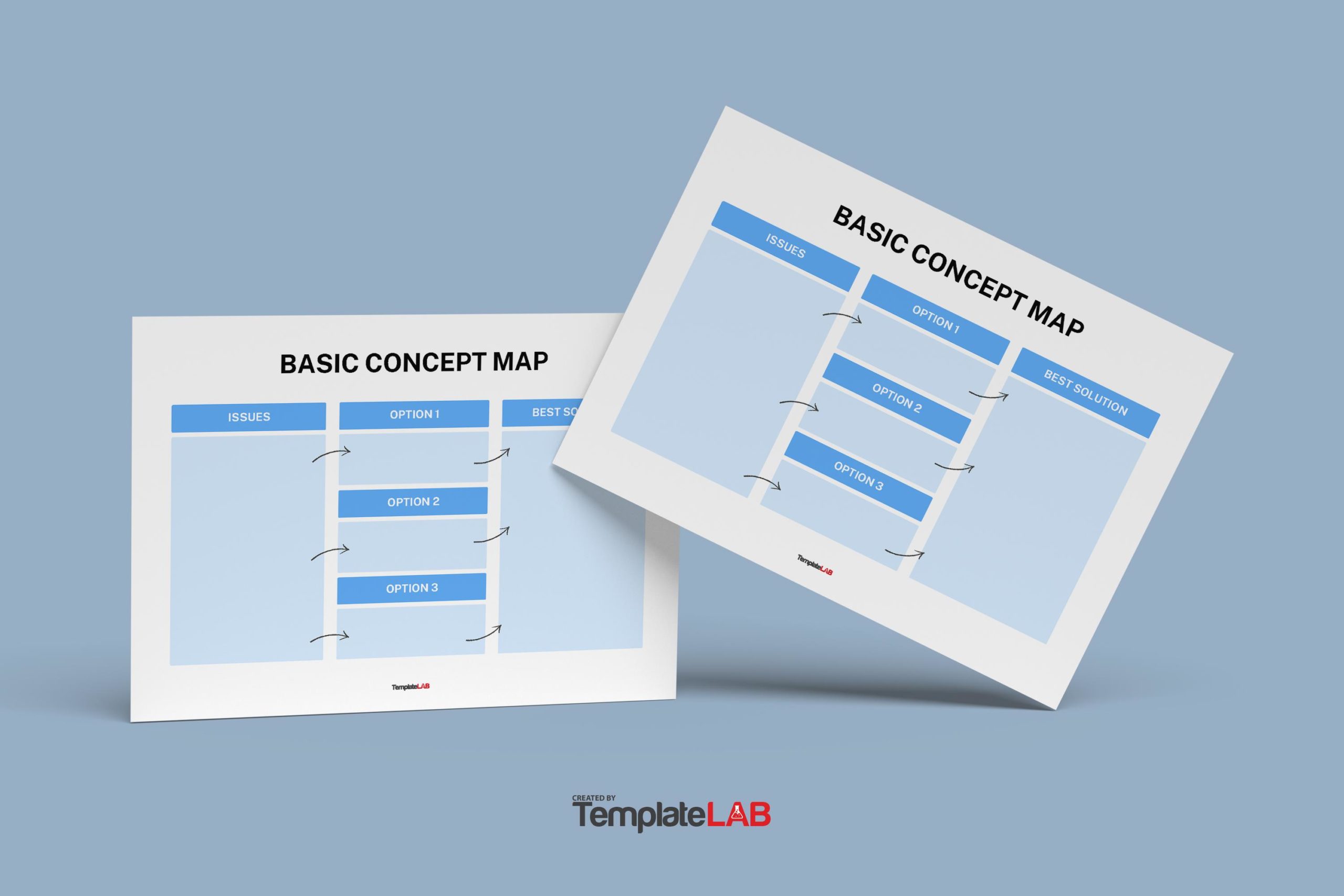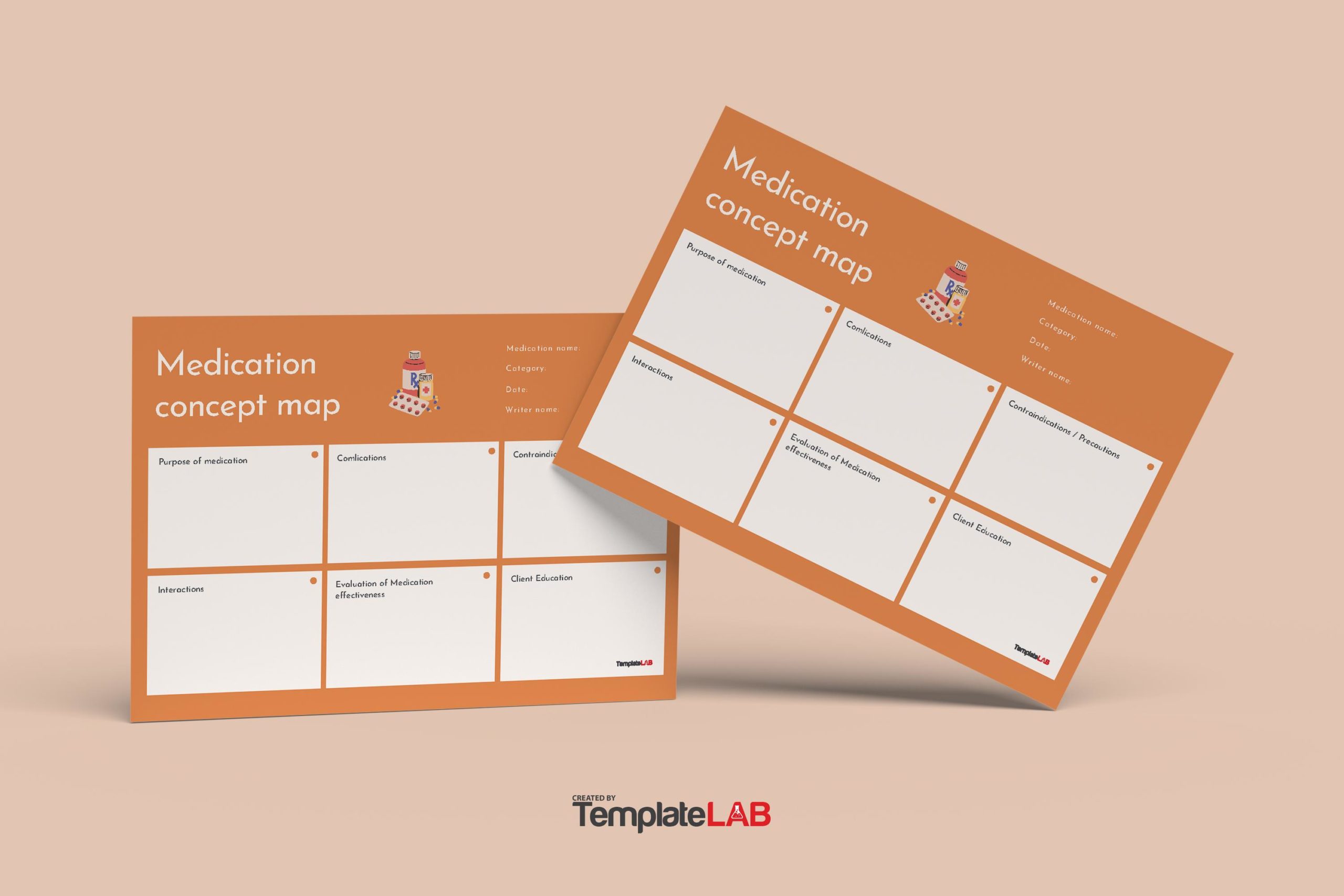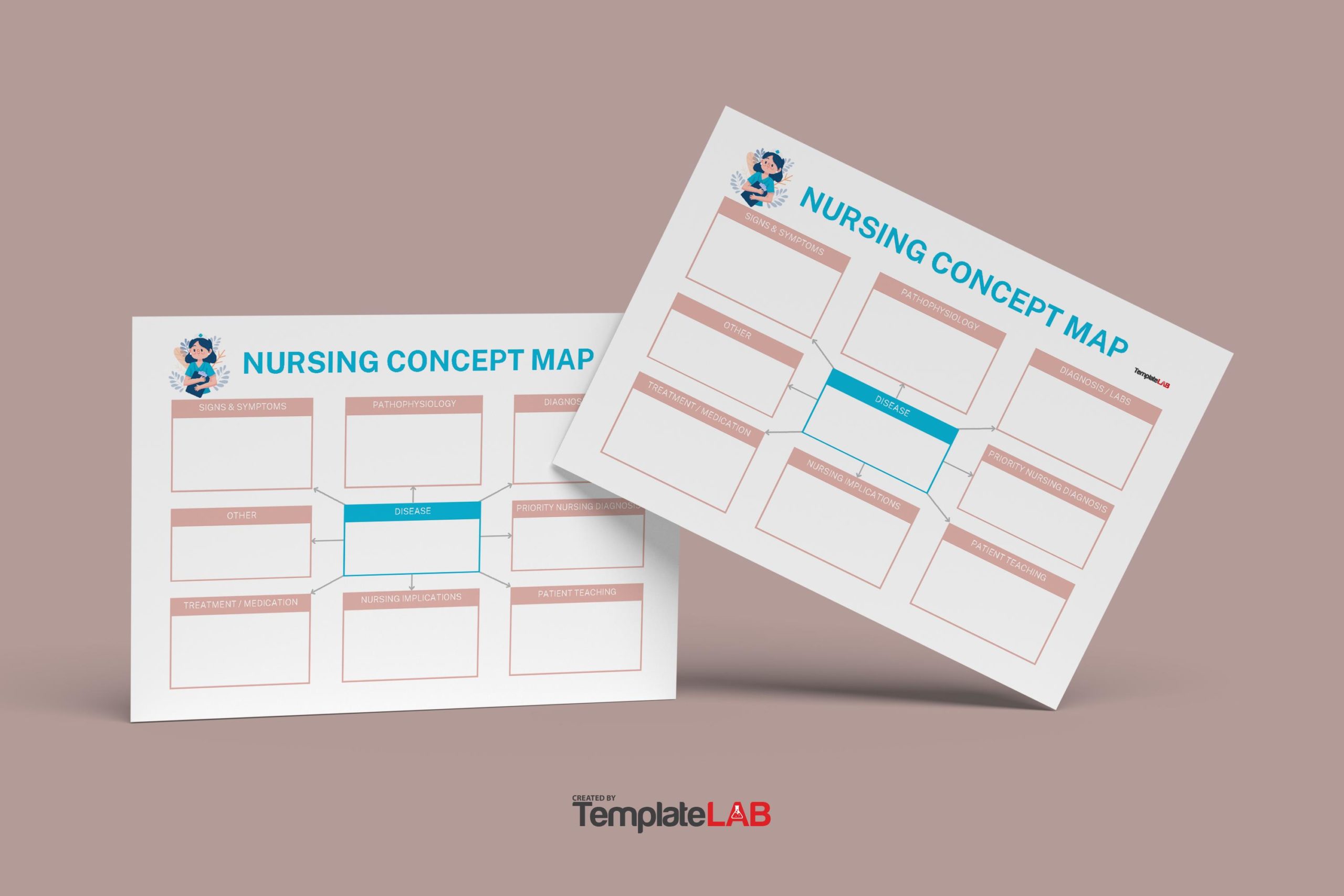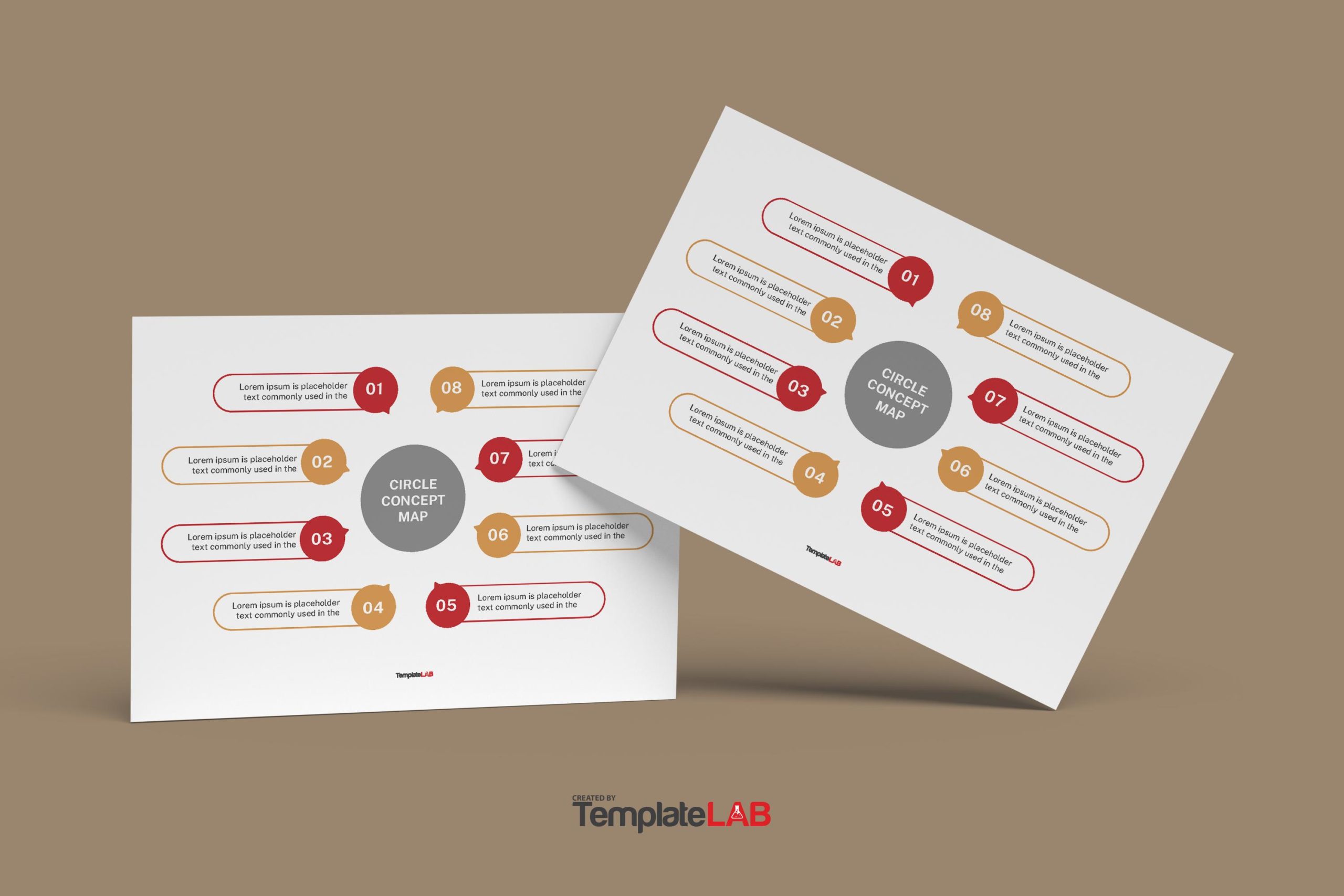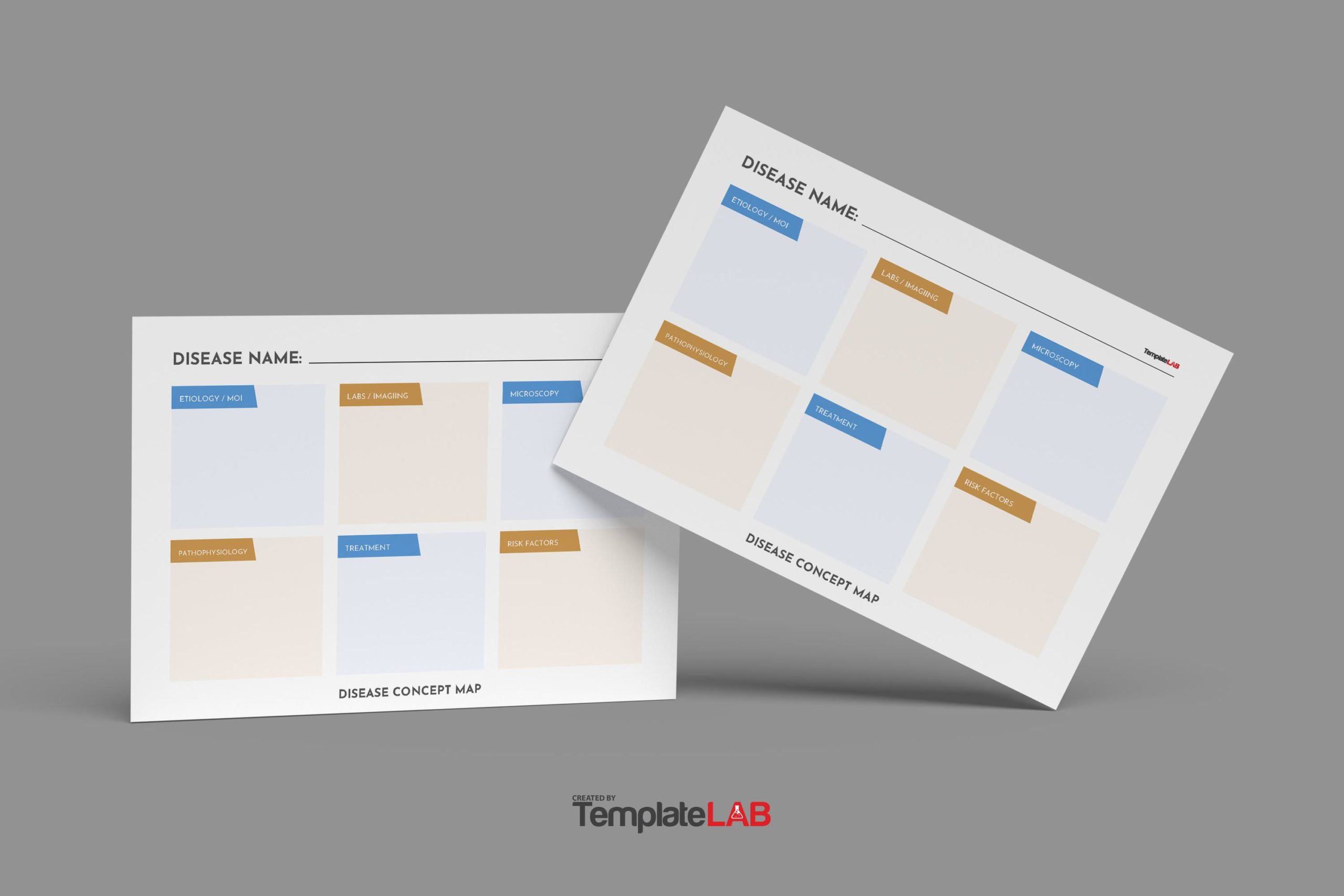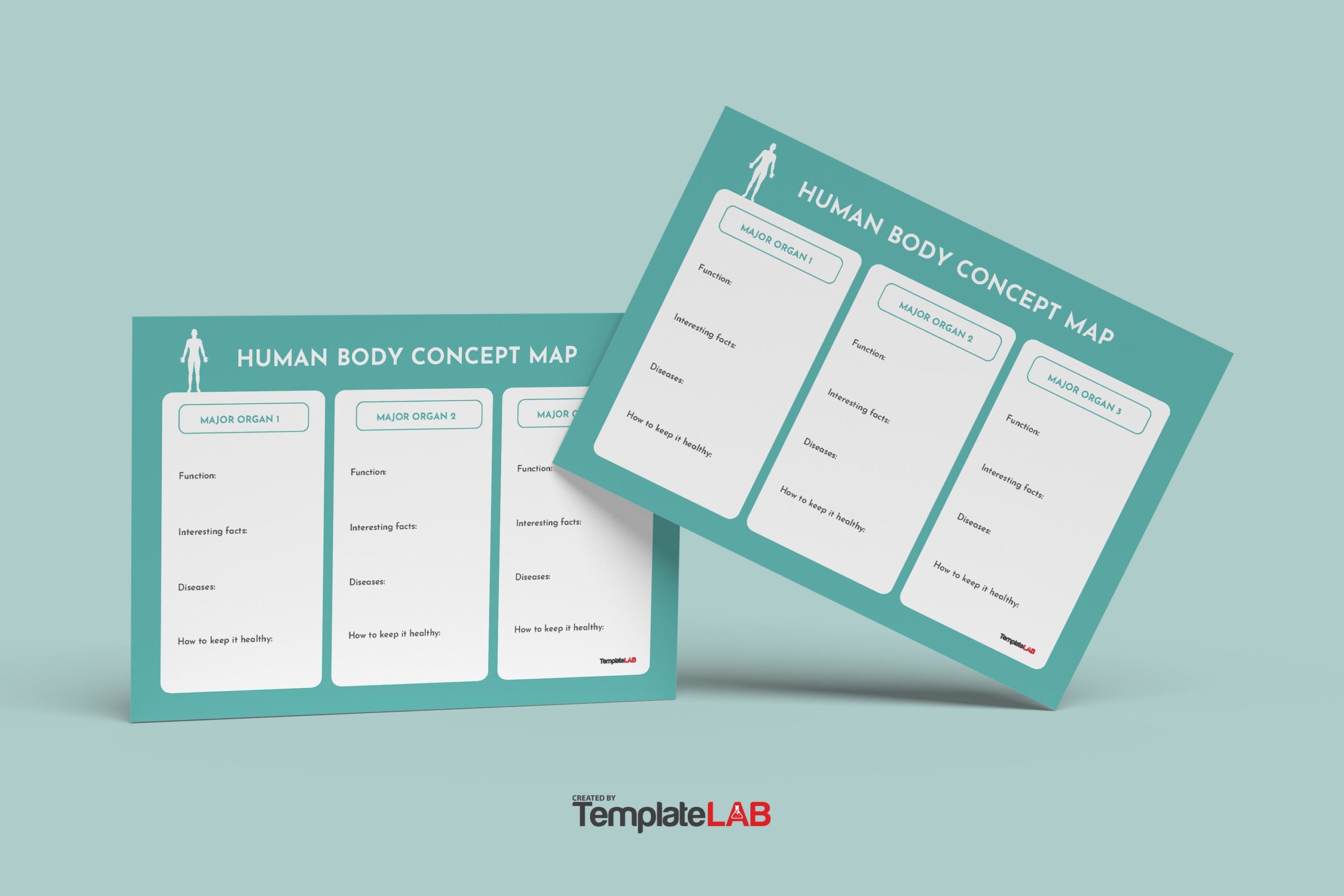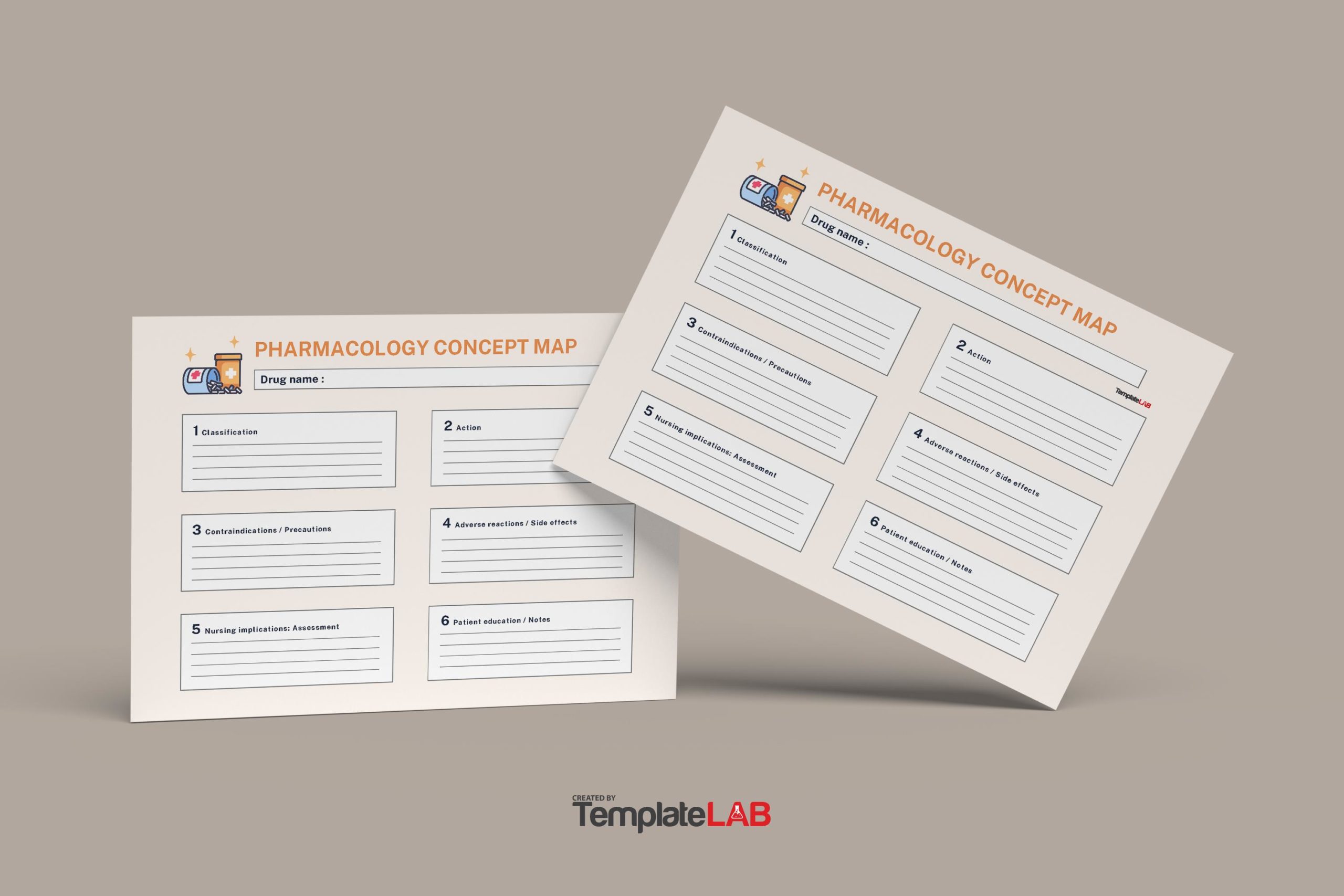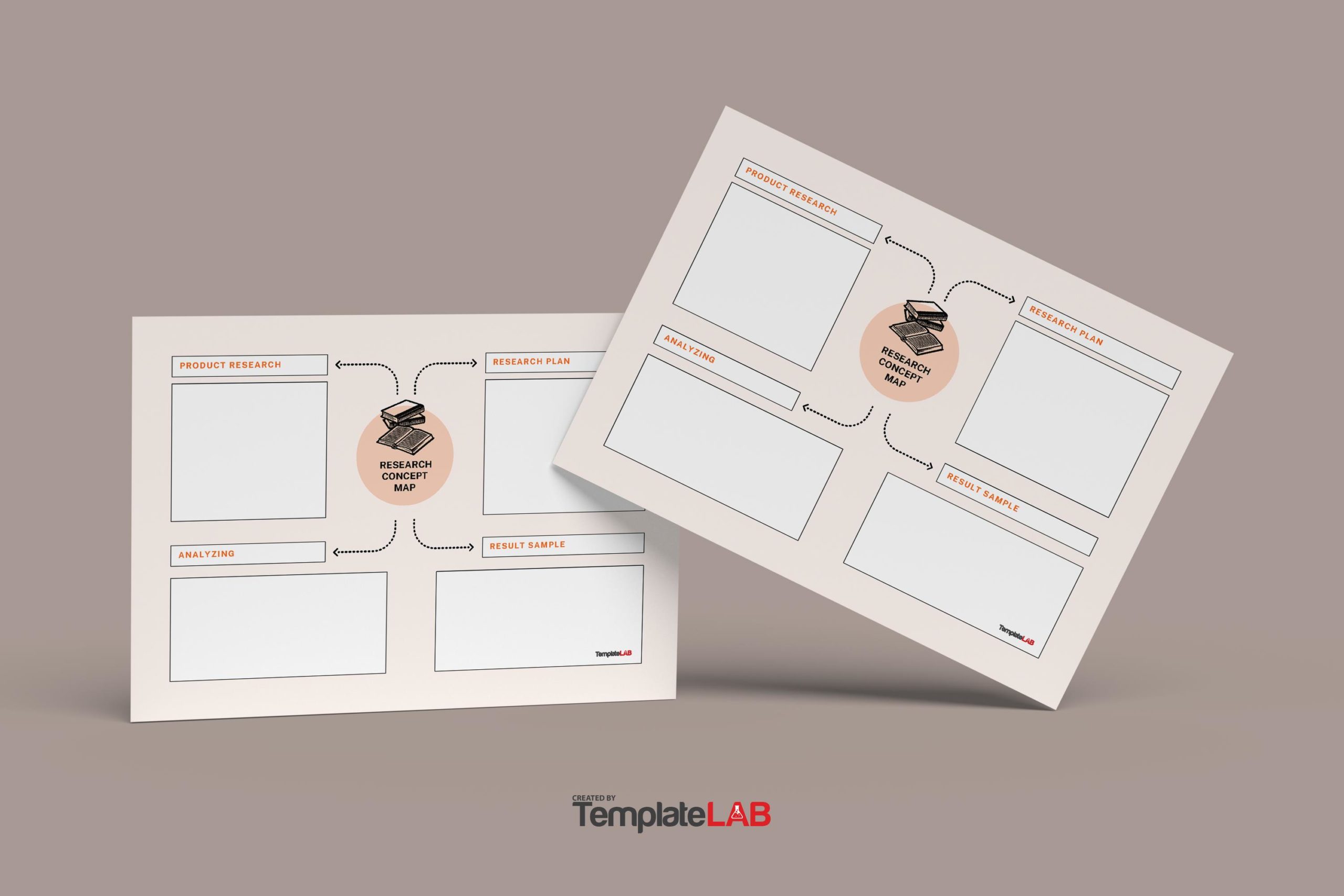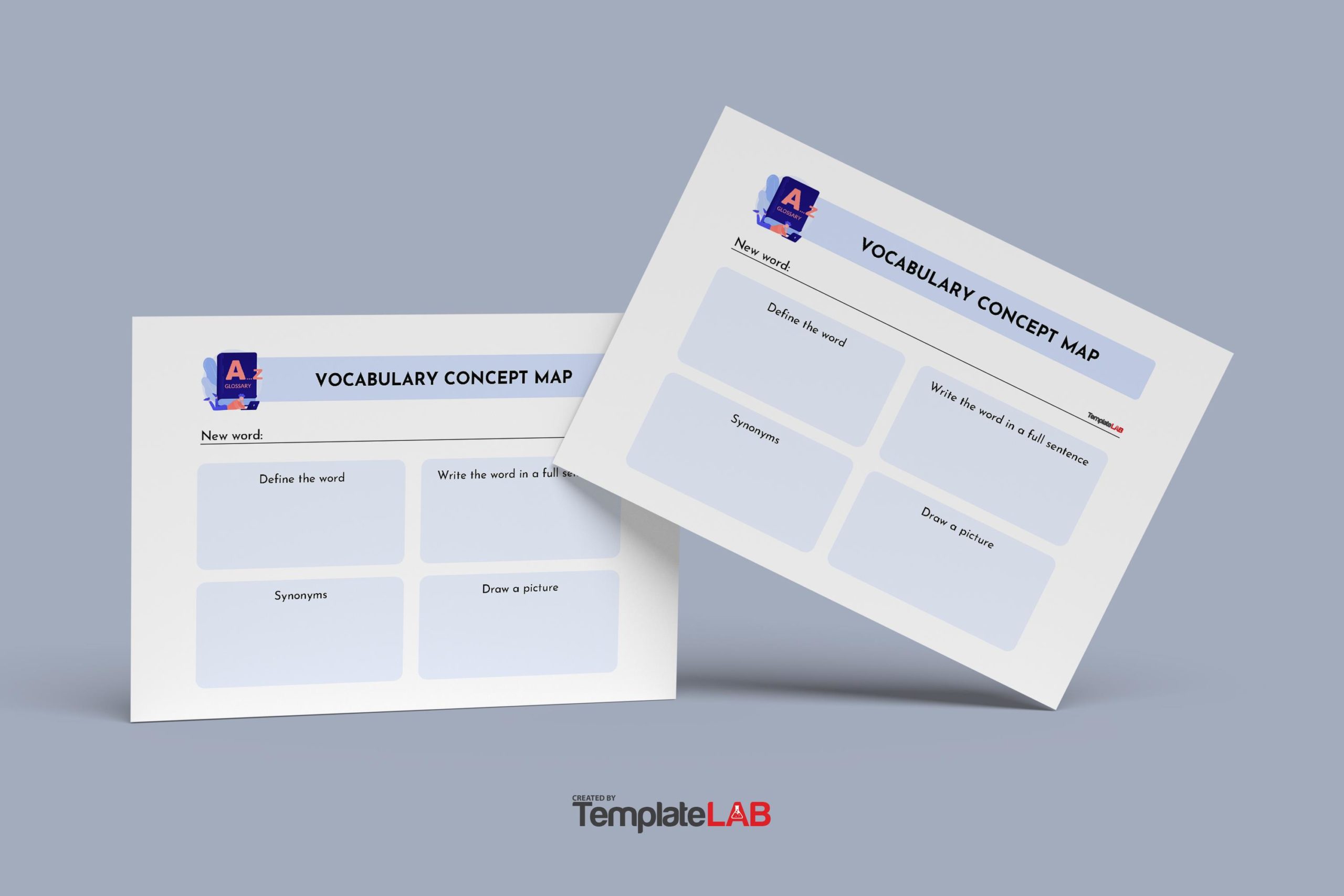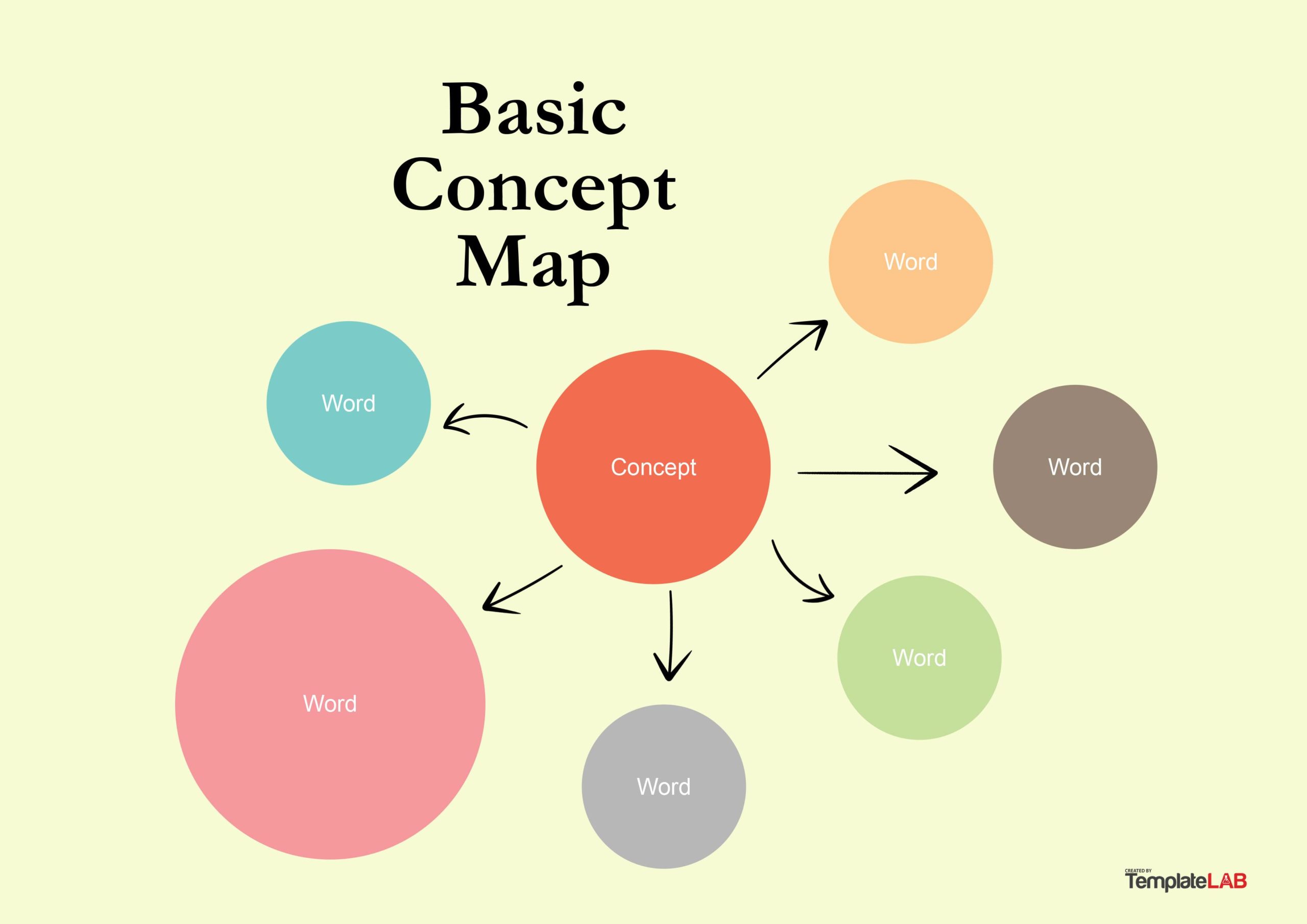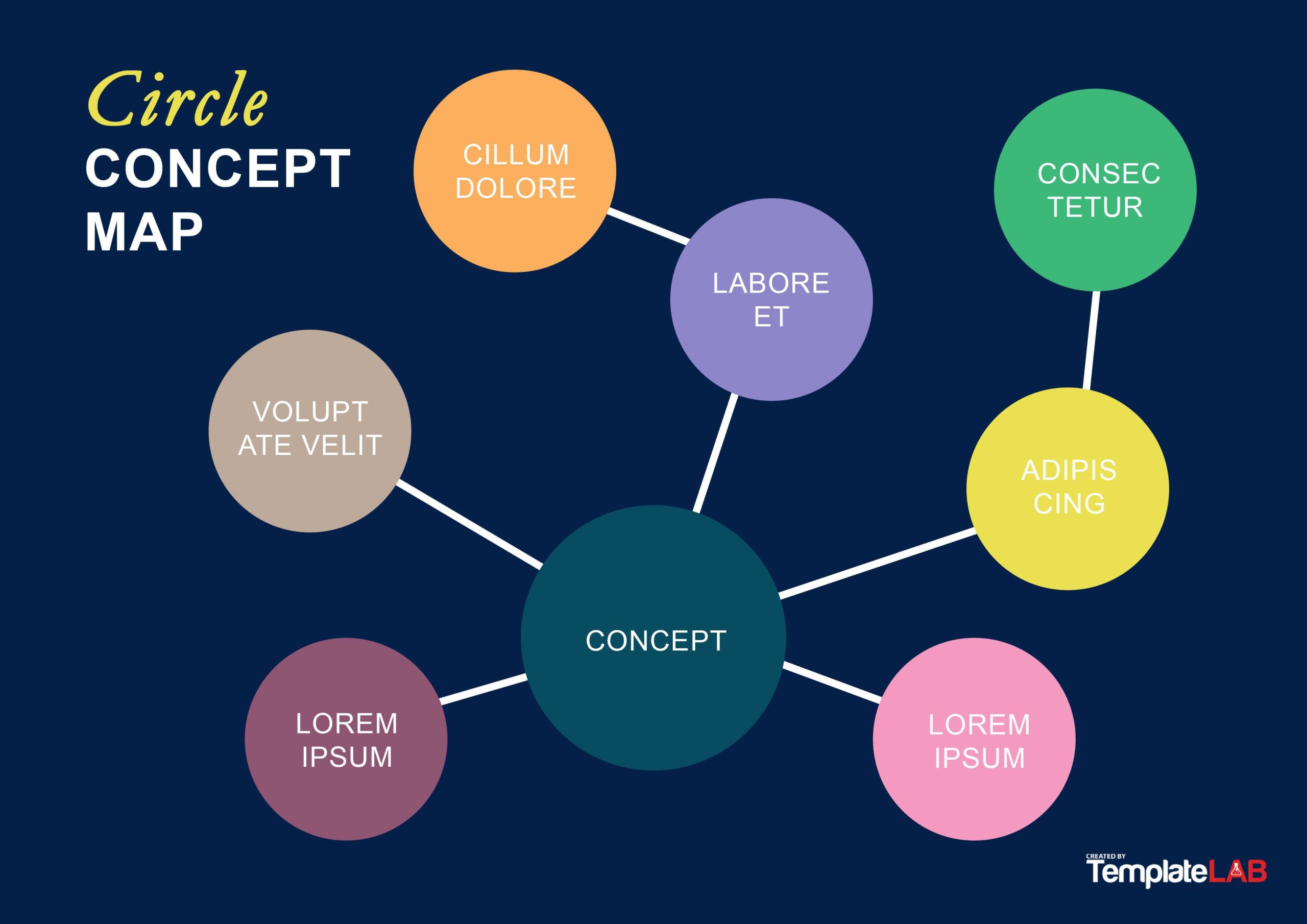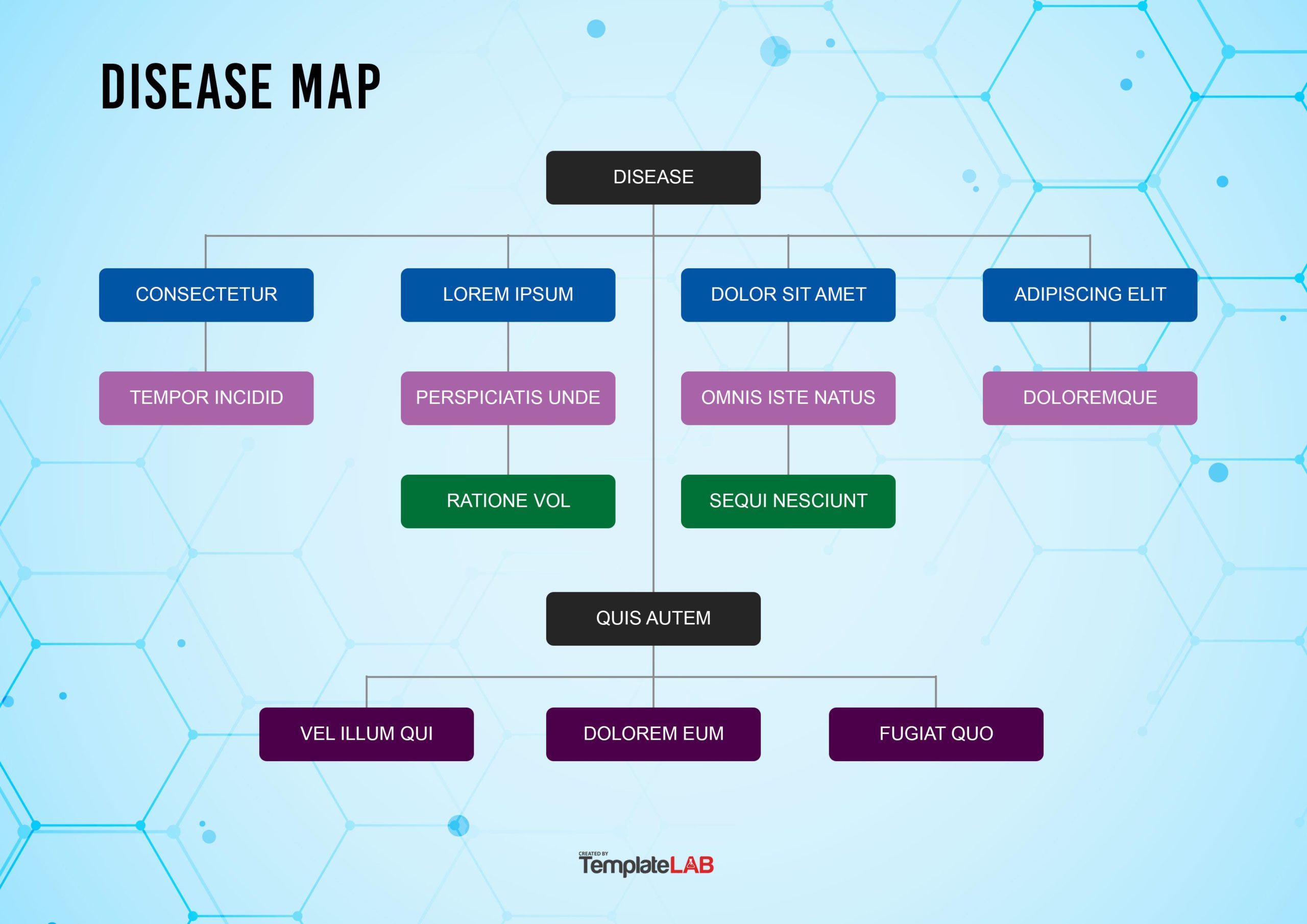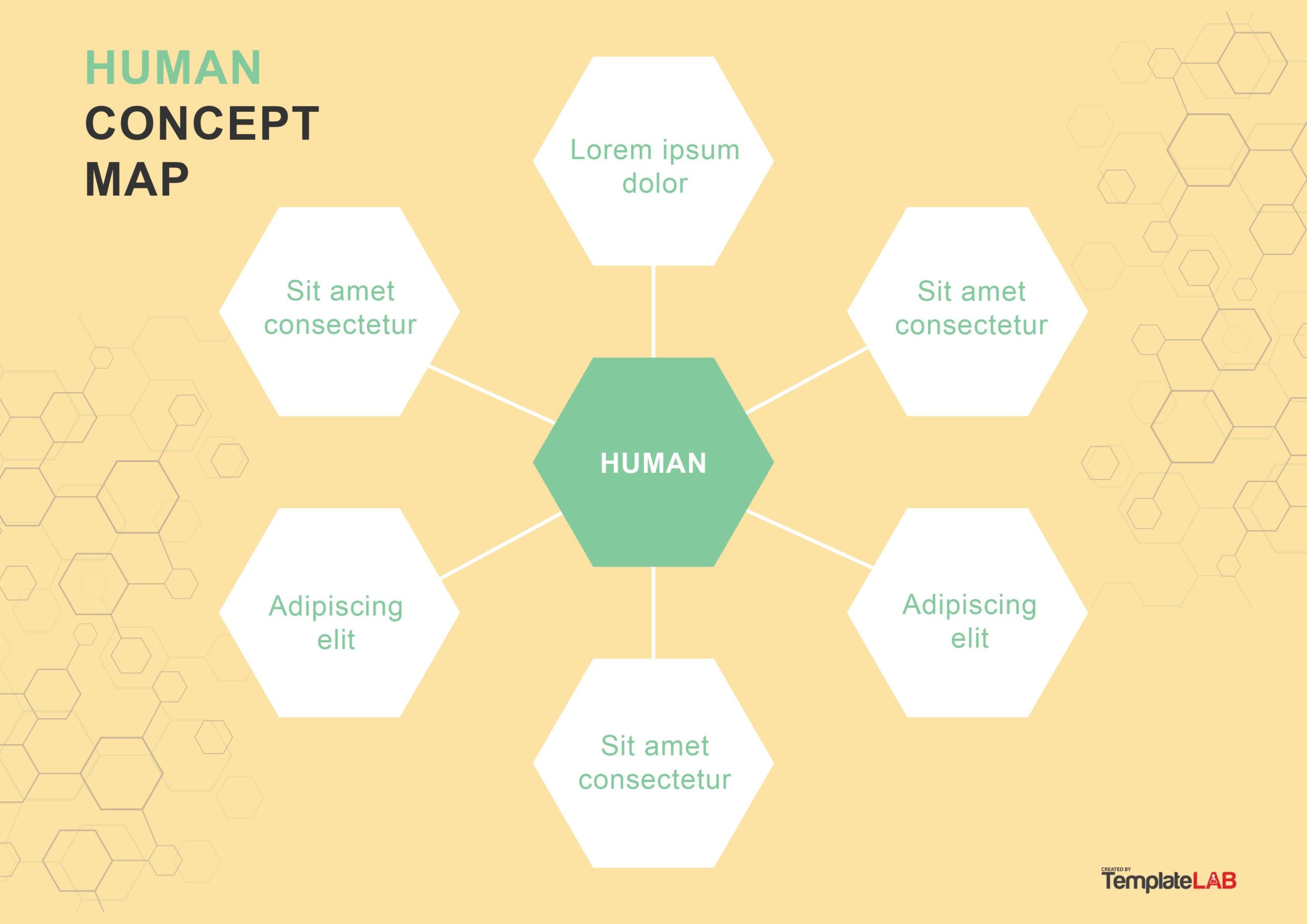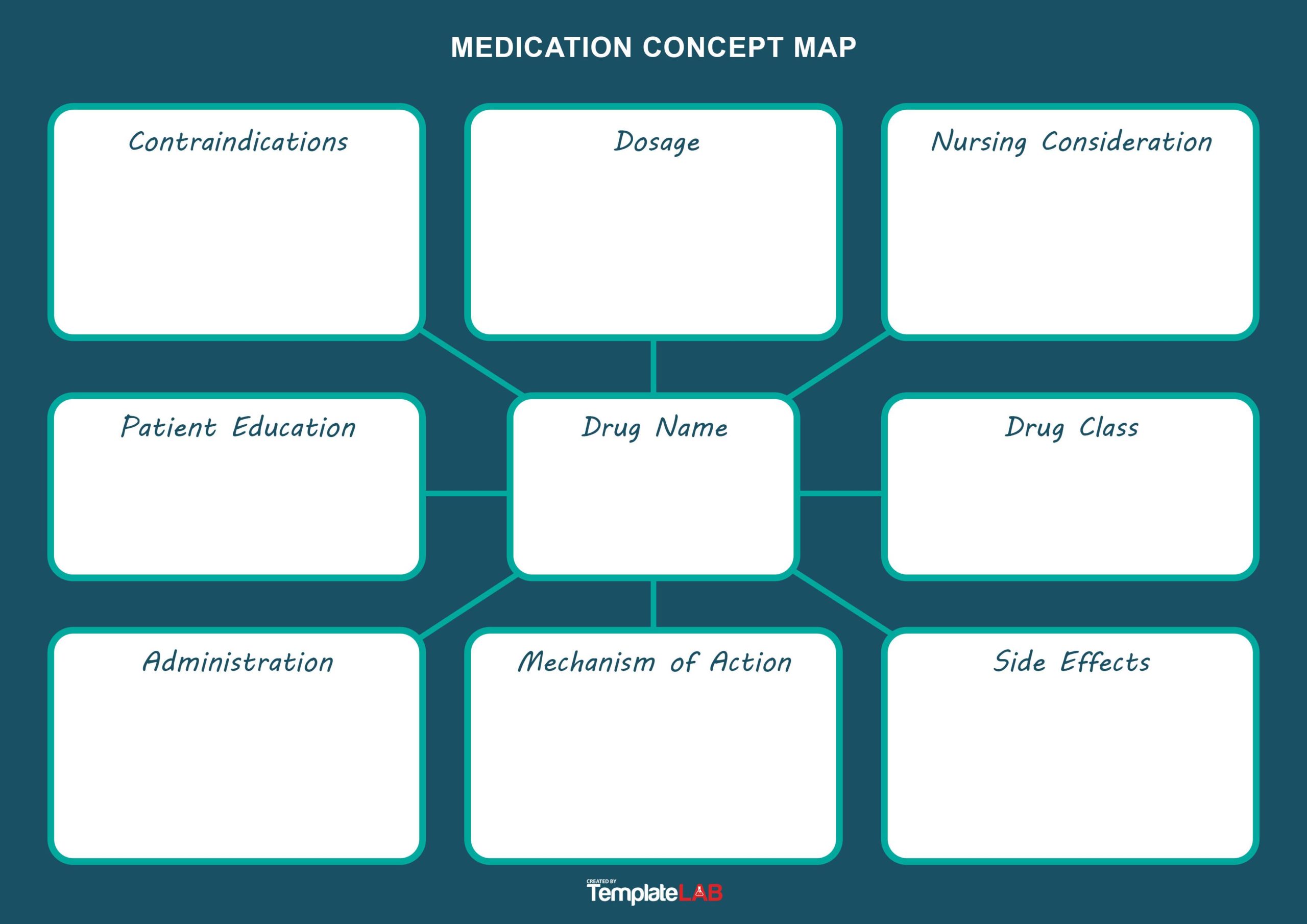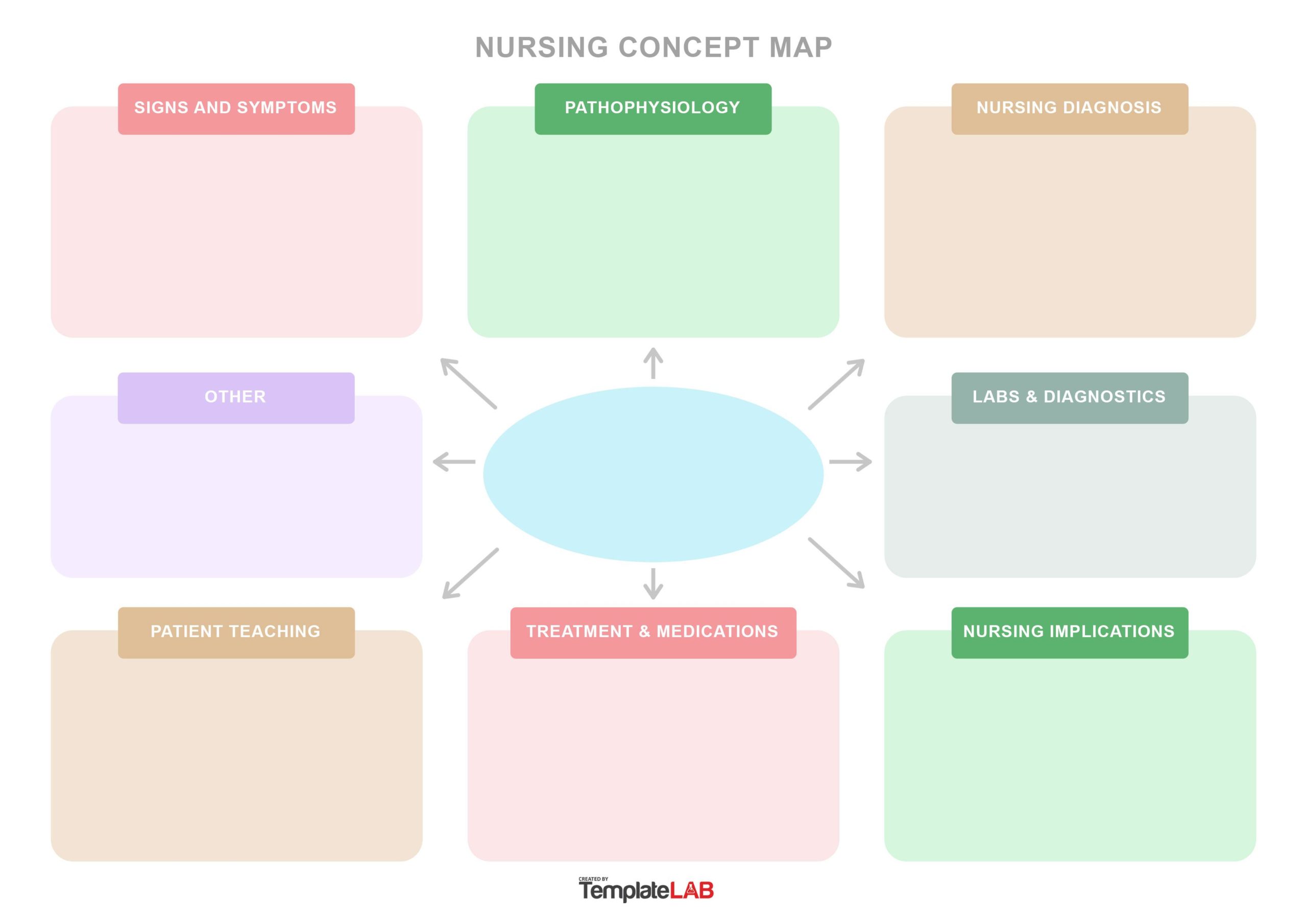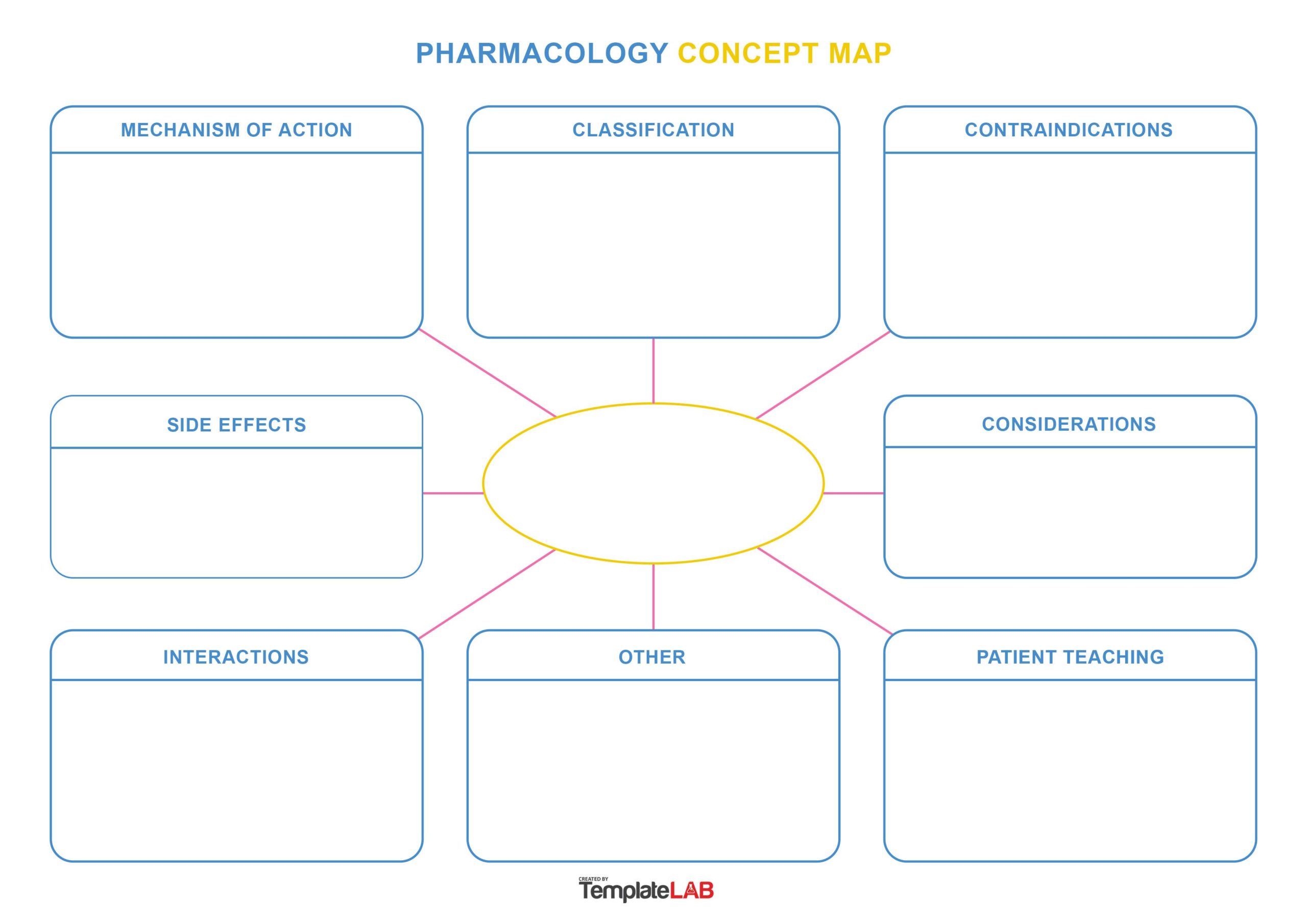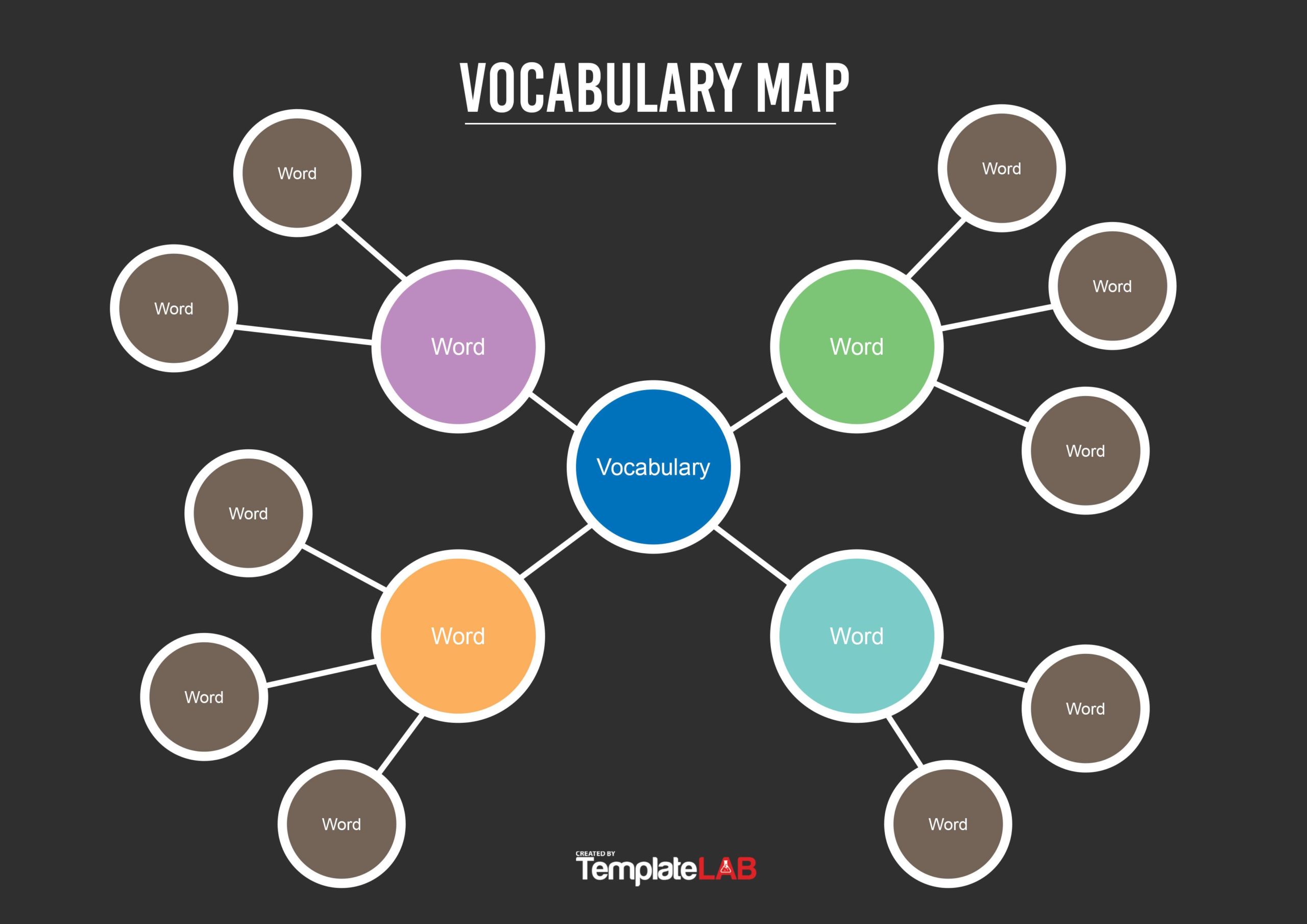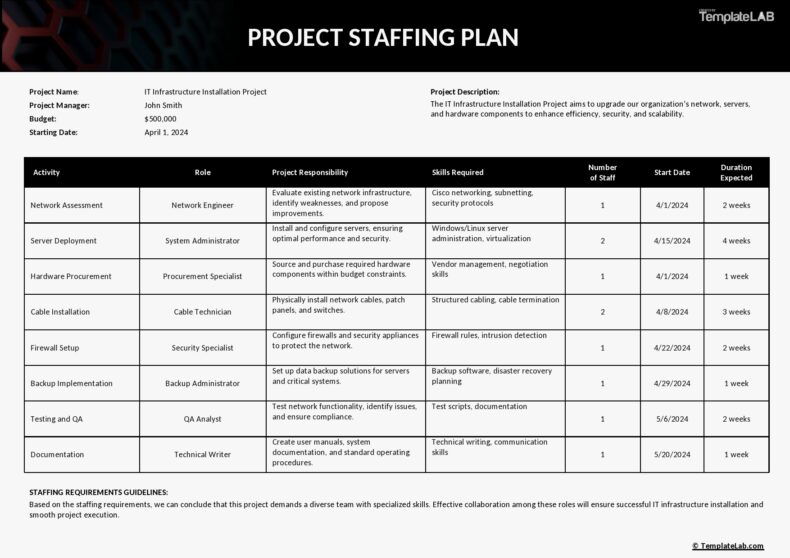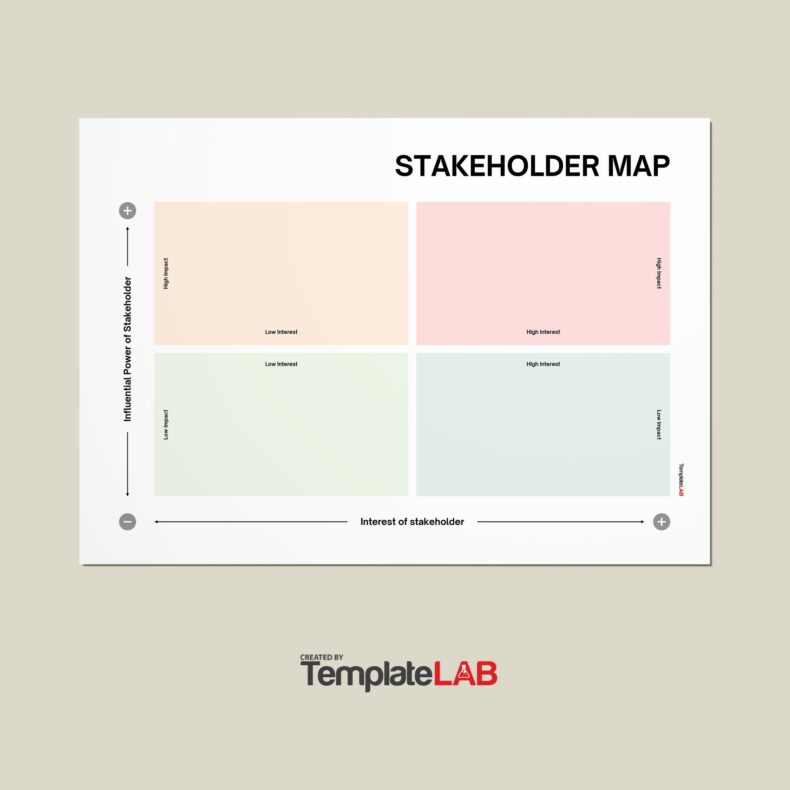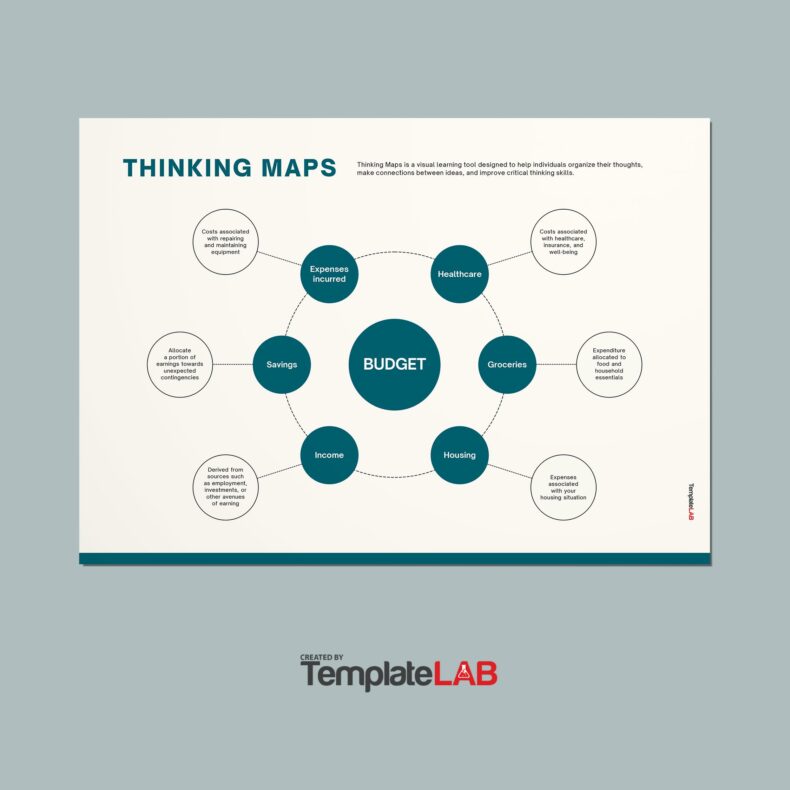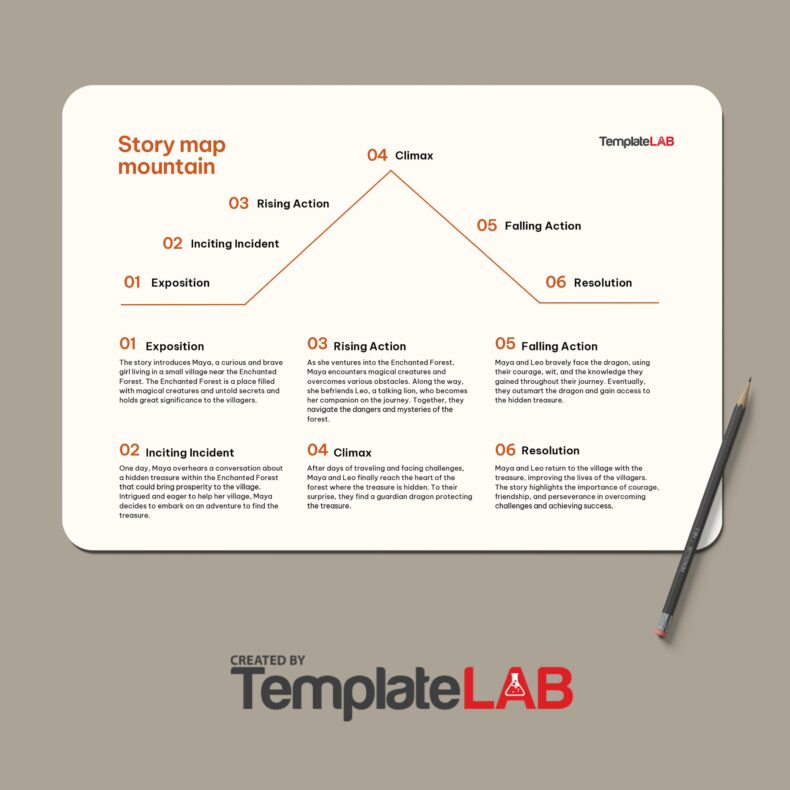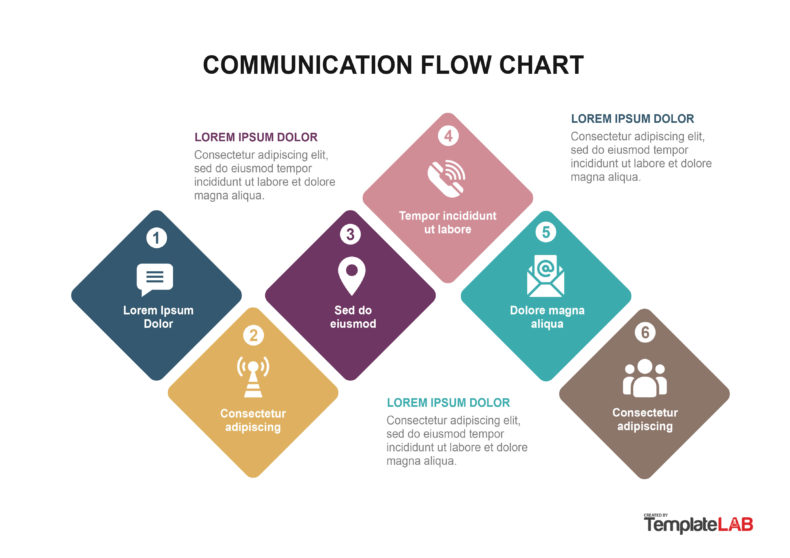A concept map is a tool used to visually display the relationship between different concepts and ideas. Concept maps are generally formed around a main idea, often known as a focus question, with sub-topics and related concepts formed from the main idea.
A concept map template is a great way to clearly visualize the relationship between concepts and can be used in a variety of fields, such as education, engineering, and business. Using a concept map template can develop your understanding of how different concepts can work together, and allows you to easily compare them.
Table of Contents
You can download a free concept map template to begin planning your ideas in a visually appealing and easy-to-understand format.
Concept Map Templates
What is a Concept Map?
A concept map can often be confused with a mind map, but the difference is in the detail.
Concept maps are tools used to visualize relationships between concepts, and this can require more detail about the context and connections that link these concepts together. A concept map template can help to simplify complex concepts through ‘mapping,’ which is essentially joining ideas together through lines, arrows, or words.
As a result, concept map templates can come in various different formats, such as graphic organizers, tables, flow charts, or Venn diagrams. Depending on the concepts you are comparing, the style of the concept map template will differ.
Differences between a Mind Map and a Concept Map
Mind maps are generally freer and less structured than a concept map, and we offer mind map templates if this is what you’re searching for. Mind maps typically focus on one idea, as opposed to concept maps which deal with a range of complex concepts at once.
A concept map template, however, is an excellent tool for students, academics, and business or salespeople who work best with a visual approach. As concept maps begin by focusing on higher-level concepts, you can easily chunk information as your concept mapping progresses. You can group the information based on meaningful connections, as you will have an overall clear picture of the relationships between everything.
Therefore, concept mapping is a great way for students to remember information as there is a clear thread flowing between each of the concepts.
Concept Map Examples
Why use a Concept Map Template?
A concept map template has many uses and allows you to visualize information in a clear and digestible way. Because of their versatility, a concept map template can suit a range of industries and learning styles.
- Business and Sales
Concept maps are easy to collaborate on, making them an increasingly useful tool in the business world. Many businesses, particularly those to related to sales, use a concept map template to brainstorm ideas and compare products against competitors. Concept maps are often used in business to identify problems and improve weaknesses within a company.
The collaborative nature of a concept map helps to increase efficiency, saving companies time and money when planning and organizing ideas. You can download a brand concept map template if you are looking to compare brands or businesses against one other. - Using a Concept Map as a Teacher
If you’re a teacher, encouraging your students to use a concept map template as one of their studying techniques can help them to engage with a more complex, abstract concept in a range of subjects. Teachers can also use a concept map to plan the curriculum in a clear and concise way. - A Concept Map Template for Students
Perhaps you’re a student yourself, in which case a concept map template can help you understand difficult concepts you may have been struggling to grasp. A concept map template can be used when planning a research paper or project, or for studying all kinds of subjects, from history to biology. It can enable you to visualize connections between complex ideas, helping to develop your understanding of important information.
Using a concept map allows you to organize your notes in a way that you can reuse them and refer back to them over time. A concept map template can help you neatly display information about complex ideas and make meaningful conclusions or estimations that would otherwise be overwhelming to extrapolate.
Concept maps can spark creativity in students, helping them to embrace the process of figuring things out and discover new ideas. We have a range of concept map templates available to help students begin planning and developing their ideas. - Concept Maps in Healthcare
Using a concept map in the healthcare field is becoming an increasingly popular way for healthcare professionals to establish links between ideas. Healthcare is an undoutably busy industry, so using a time-efficient tool such as a concept map helps to give employees a better understanding of complex information.
Concept mapping in healthcare can be used to prioritize patient assignments, map out plans of care, and to train medical staff, such as doctors and nurses. For example, a nursing concept map template is designed to organize information and connect ideas in a way that relates specifically to nurses and their job role.
Elements of a Concept Map
Although the format of a concept map can change, there are several key elements that distinguish it from other forms of visually displaying information.
- A focus question. This is where your concept map begins. A focus question helps to establish the problem that needs to be solved using the concept map, and this allows the direction of your concept map to be maintained.
Having your focus question at the top of your concept map template ensures that it is always at the forefront of the connections made throughout the mapping process, and enables you to build hierarchical connections by referring back to your focus question. - Linking words or phrases to build connections. As you begin to connect concepts together, you can add words along the lines that form the connection. Using words such as ‘requires’ and ‘causes’ can help you easily identify the relationship between two concepts.
- Hierarchical structure. Generally, the structure of a concept map template is what sets it apart from other forms of graphic organizers or visual information tools. A concept map is typically designed to be read from top to bottom, with the higher-level or ‘general’ concept at the top, and then becoming more specific as it progresses below.
- Parking lot. The term ‘parking lot’ is used in concept mapping to mean the list of key concepts that need to be included in the concept map. This list should be ranked from the most general to the most specific concept, and you can then move each concept into the map as you identify where they will fit into.
Concept Mapping
Different Types of Concept Maps
Although most concept maps will contain the same basic elements, they can be arranged in a variety of different ways, depending on the aim of the concept map and its focus question.
- Flowcharts
A concept map can be presented in the style of a flowchart. This follows a step-by-step, linear structure that makes it easy for the reader to use. Flowchart concept map templates are therefore particularly useful in work or project environments, as they are easy for others to collaborate with. - Hierarchy Mapping
Hierarchy concept maps are a common form of concept mapping. The highest-ranking concept or ‘main’ concept will be at the top, with lower-ranking ideas ordered below. This type of concept map can be used for a range ideas, such as family trees or workplace organizational charts. It is a clear way to display the relationship between concepts and the top-to-bottom layout is easy for the reader to understand. - Spider Diagrams
Spider diagrams are a type of concept map with the focus question or main idea displayed in the middle of the page. Other key concepts or topics will then branch outwards, like a spider web. Spider diagrams are best used when considering a concept that has many various sub-topics to analyze. It is useful for brainstorming and exploring different facets of one particular concept.
How do you create a Concept Map?
One of the benefits of using a concept map is how easy it is to create, as it requires little in the way of design and effort. However, you can download a concept map template to begin planning your ideas and save even more time when creating the layout for your concept map.
I’ve outlined a simple step-by-step process to create concept maps and fill in the data in an organized and concise way.
- Pen and Paper vs. Online
Using pen and paper is the traditional way to create a concept map, and you can print one of our concept map templates to do this.
However, you may prefer to design your concept map using a word processor, such as Google Docs or Microsoft Word. This is slightly more time-consuming, but can provide organized looking results. You may wish to download a concept map template and edit this on a computer as opposed to printing.
There are also online concept map maker tools that you can use to design a concept map. This can be a great way to share your concept map with colleagues or classmates if you are working on a project. - Identify your focus question and main concept
This is the first step towards creating your concept map. Consider what your reasoning is for wanting to create a concept map, as this will provide you with your key focus question. Is there something that you want to discover or improve? Or is there a concept that you need to study in more detail? Begin with these ideas to help you develop an overall focus question or main idea. - Identify key concepts and create your parking lot list
Once you have established your main concept, you can begin writing and ranking a list of related key concepts. These concepts should be ranked, starting with the most general idea to the most specific. This is known as the parking lot list, and typically consists of around 15-25 related key concepts. You can then add these concepts to your concept map as you begin finding connections between ideas. - Begin adding all the data into each of the shapes on your concept map template
If you have chosen a hierarchical format for your concept map, then you should begin arranging each concept in this style, with the main concept at the top and then more specific concepts underneath.
Spider diagram concept maps will begin with the focus question or main idea in the middle, with related concepts branching outwards from this. Depending on your chosen layout, the structure of your concept map will differ. Try to lay out information as accurately and clearly as possible, especially if you are colloborating with others on a project.
The layout of your concept map template will develop as you begin to add lines to connect each concept together, adding linking words or phrases on the lines to display the relationship between each idea. - Edit and add detail
The beauty of a concept map template is how easy it is to customize. You can always re-examine the relationships between concepts and add detail to your concept map presentation.
You should ensure that your linking words are accurate and that each concept is positioned correctly to make your concept map as easy to read as possible. You may also wish to add images to your concept map to highlight particular ideas.
Benefits of a Concept Map Template
Concept maps are a beneficial tool for anyone wishing to explore the relationships between different concepts in more detail. They provide a clear, visual representation of ideas and are easy to make. Using a free concept map template can save you time creating a concept map from scratch, enabling you to visualize your complex concepts using a simple diagram.
Whether you are working with others or alone, concept maps can help you to display your ideas and promote creative and critical thinking. You may find that using a concept map template helps you to discover brand new ideas about a particular concept and thus opens up new possibilities for your research or workplace. Download a free blank concept map template to begin creating links, brainstorm for your research process, and organize information in clear way.

